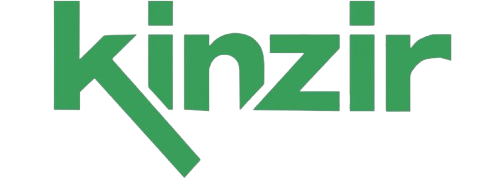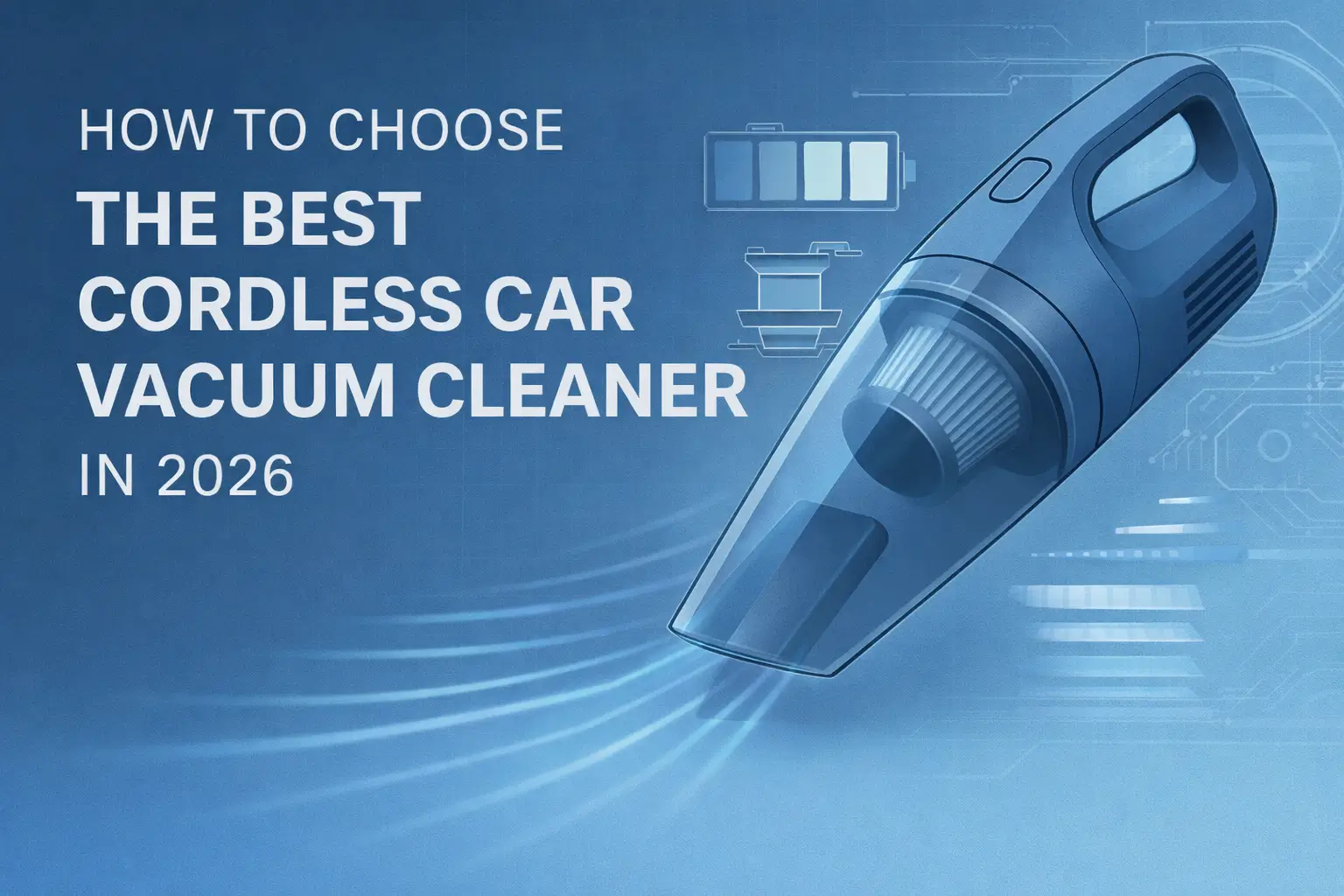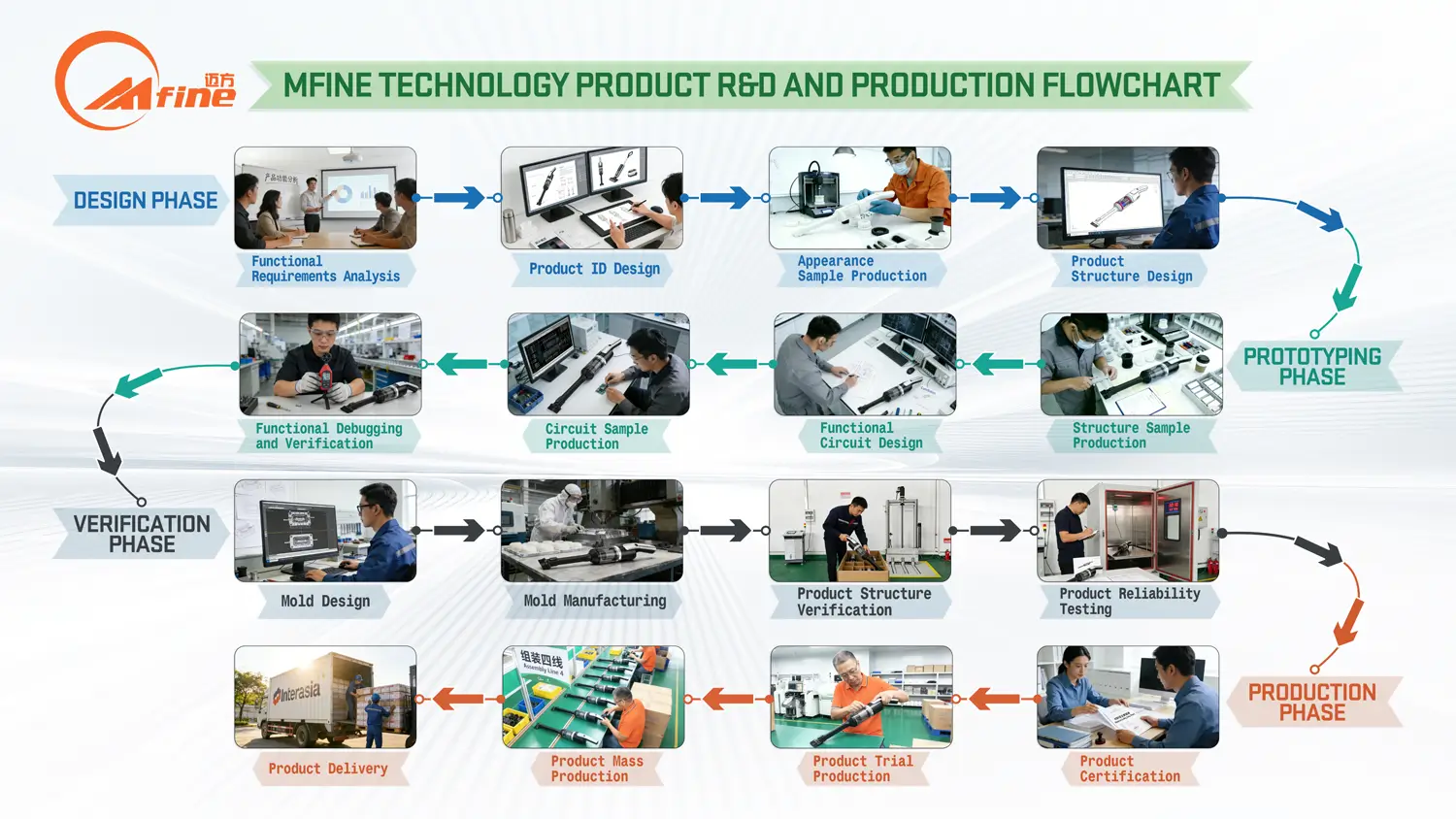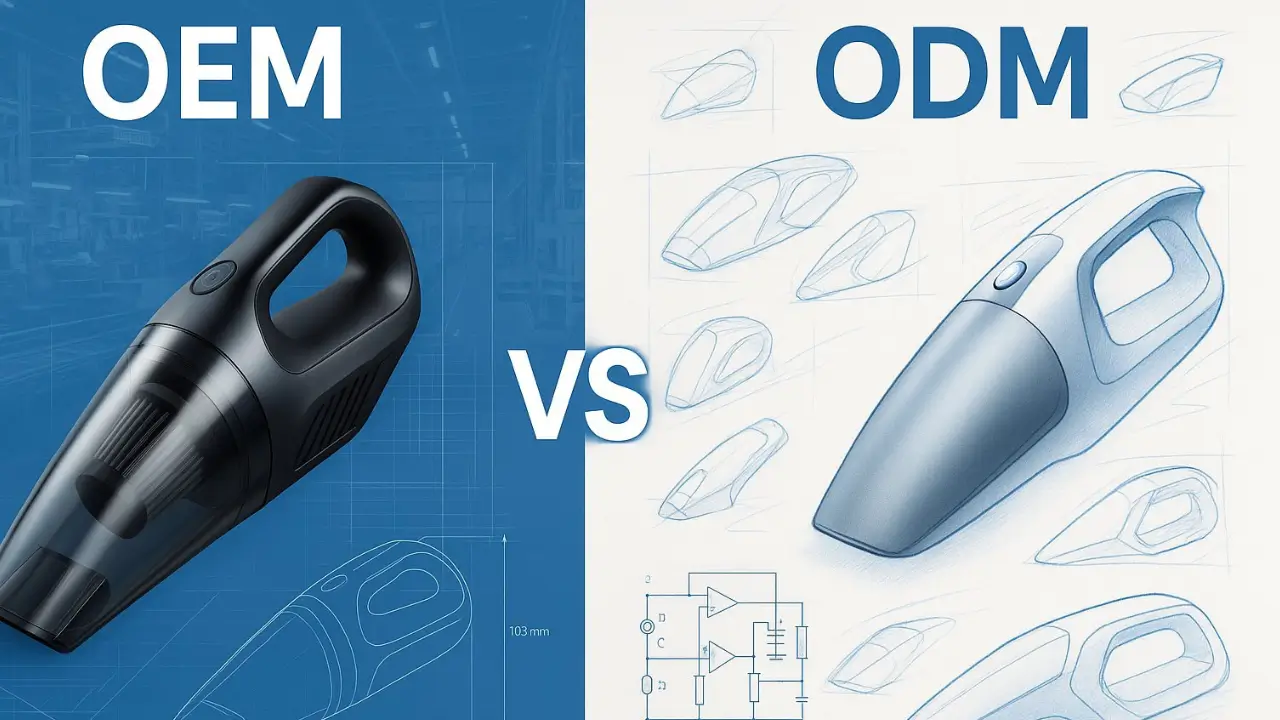Custom OEM Car Vacuum Cleaner Options allow automotive brands to create specialized cleaning solutions that align perfectly with their market positioning and customer needs. Kinzir stands as the leading cordless car vacuum cleaner manufacturer in China, offering comprehensive customization capabilities for businesses seeking to develop their own branded automotive cleaning products.
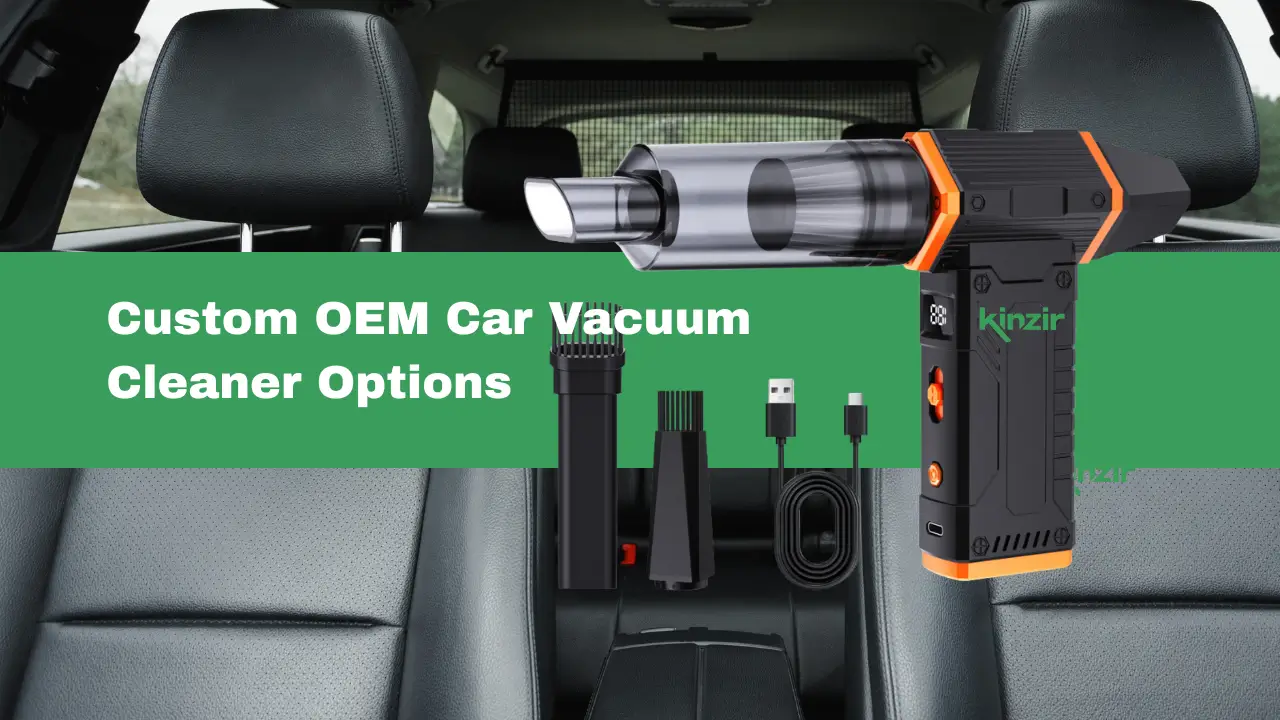
OEM cordless car vacuum cleaners provide complete flexibility in branding, performance specifications, and design elements to match your exact business requirements. You can customize everything from motor power and battery capacity to color schemes and attachment configurations. This approach ensures your vacuum cleaner stands out in the competitive automotive accessories market.
Your partnership with an experienced OEM manufacturer opens doors to professional-grade certifications, flexible order quantities, and comprehensive after-sales support. You’ll gain access to advanced motor technologies, varied capacity options, and extensive documentation that streamlines your product launch process.
Branding And Logo Customization
Private label car vacuum cleaners offer multiple branding approaches to establish your unique market presence. Logo application methods, custom packaging designs, branded documentation, and parameter labeling create cohesive brand recognition across all customer touchpoints.
Logo Options: Laser Engraving, Silk Screen Printing, Stickers
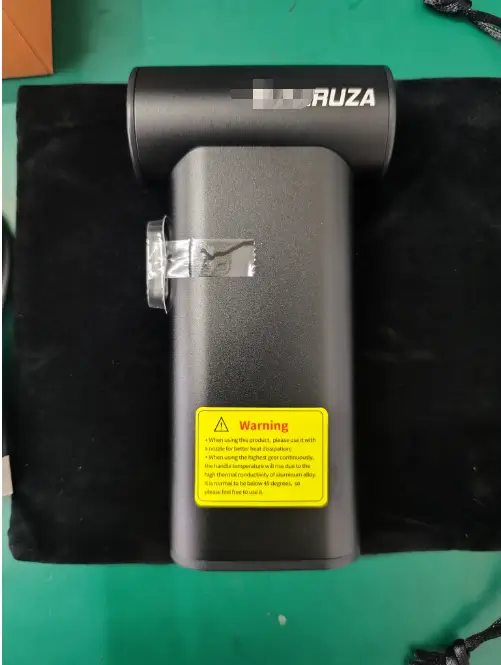
Laser engraved car vacuum cleaners provide permanent, precise logo placement that resists wear and fading. The engraving process creates raised or recessed designs directly into plastic or metal surfaces. This method works best for simple logos without multiple colors.
Silk screen printing delivers vibrant, multi-color logos with smooth finishes. The process applies ink layers through mesh screens onto vacuum housing surfaces. Screen printing handles complex designs with gradients and detailed graphics effectively.
Logo sticker applications offer cost-effective branding for smaller orders. High-quality vinyl stickers withstand temperature changes and cleaning products. Stickers allow for quick logo updates without manufacturing delays.
Most manufacturers require minimum order quantities of 500-1000 units for custom logo printing car vacuum cleaner projects. Setup costs vary from $200-800 depending on complexity and printing method.
Custom Packaging And Retail Boxes
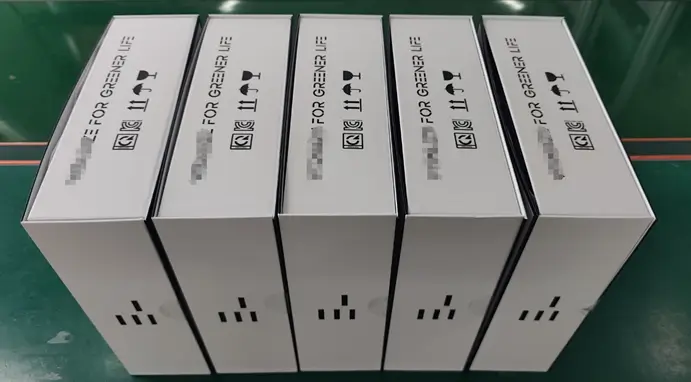
Custom packaging car vacuum cleaner designs transform standard brown boxes into marketing tools. Full-color printing showcases product features, specifications, and your brand identity. Professional packaging increases perceived value and retail appeal.
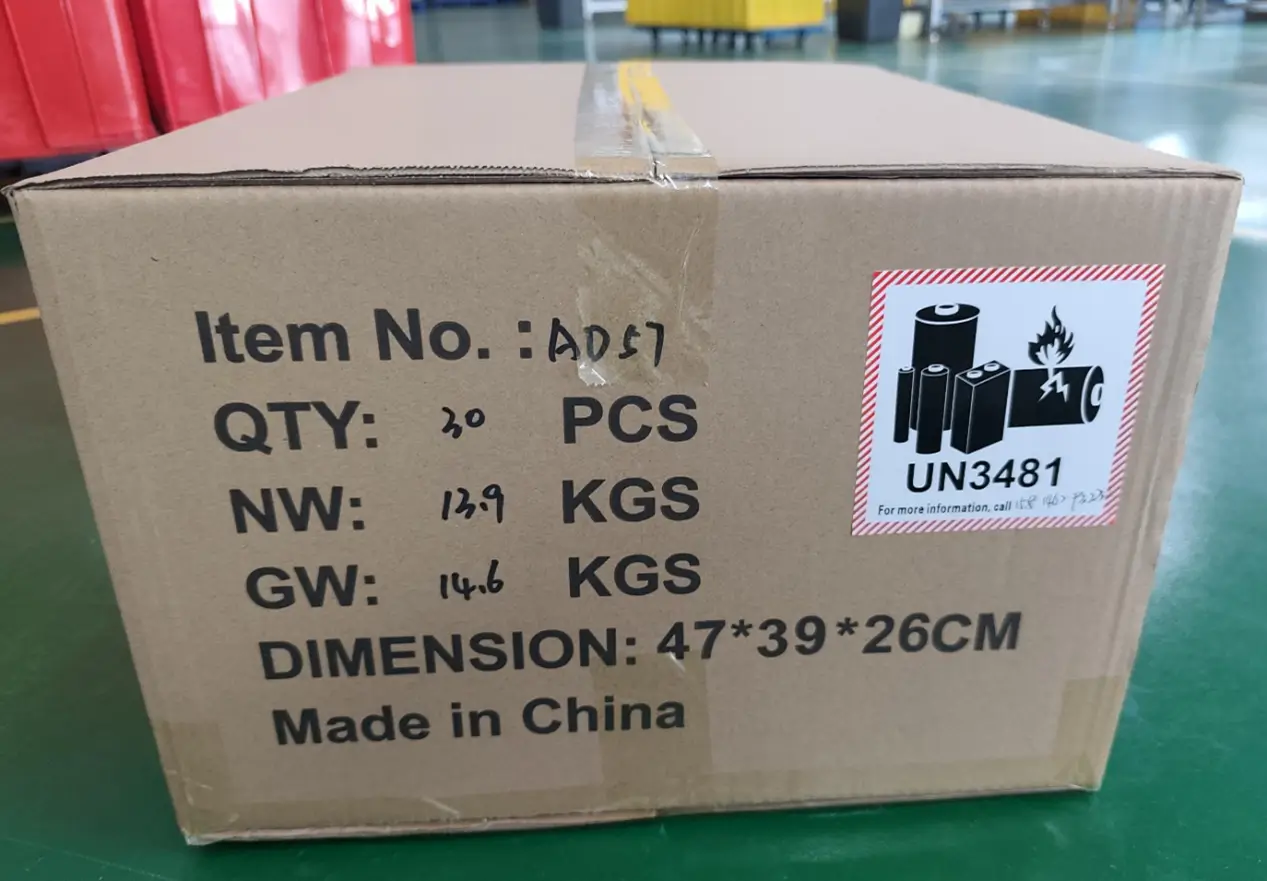
Standard customization options include:
- Custom dimensions and insert foam
- Product photography and lifestyle images
- Multi-language text and regulatory compliance marks
- Window cutouts for product visibility
Retail-ready packaging typically adds $2-5 per unit to manufacturing costs. Corrugated cardboard provides durability during shipping while maintaining cost effectiveness. UV coating protects printed surfaces from fading and moisture damage.
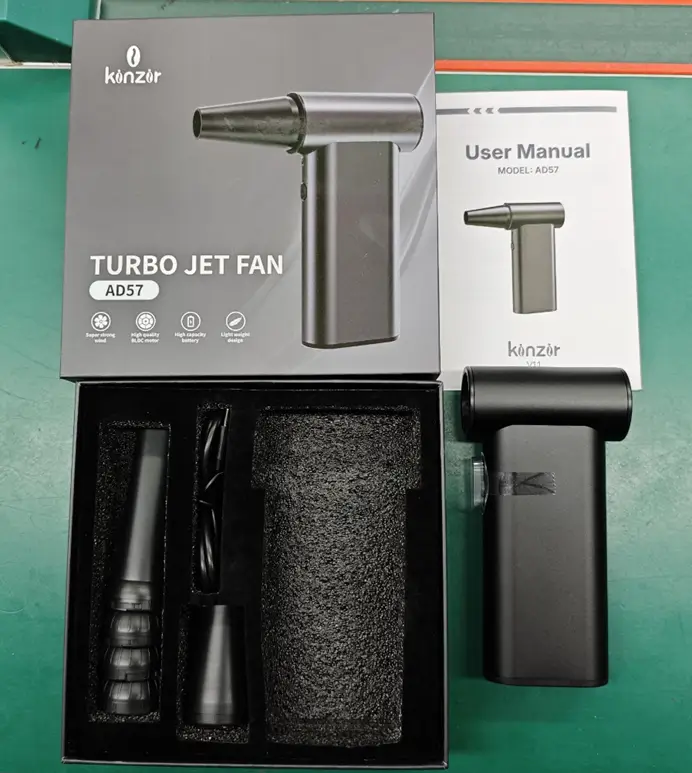
Branded Instruction Manuals With Tailored Safety Notes And Usage Tips
Branded instruction manuals reinforce your company identity beyond the initial purchase. Custom manuals include your logo, contact information, and brand-specific safety messaging. Professional documentation builds customer confidence and reduces support inquiries.
Manual customization includes:
- Company-specific warranty terms
- Branded troubleshooting guides
- Custom safety warnings and certifications
- QR codes linking to video tutorials
Multi-language manuals accommodate diverse markets without separate printing runs. Digital formats reduce printing costs while enabling easy updates. Professional translation services ensure accuracy for safety-critical information.
Parameter Stickers With Specs, QR Codes, And Barcodes
Parameter stickers display technical specifications, compliance certifications, and tracking information. Custom stickers include your brand colors, fonts, and logo placement. Professional labeling meets regulatory requirements while maintaining brand consistency.
Essential sticker elements:
- Power ratings and electrical specifications
- CE, FCC, or relevant safety certifications
- Model numbers and manufacturing dates
- QR codes for warranty registration
Barcode integration enables inventory tracking and retail point-of-sale systems. Sequential numbering helps with quality control and warranty claims processing. Tamper-evident materials prevent unauthorized modifications or counterfeiting.
Color, Surface, And Design Flexibility
Custom OEM car vacuum cleaners offer extensive personalization through full-body color matching, premium surface treatments, and sustainable material selections. These options enable precise brand alignment while meeting specific market positioning requirements.
Full Body And Accent Color Customization
You can specify exact color matches using Pantone, RAL, or custom color codes for complete vacuum cleaner bodies. Most OEM manufacturers accommodate primary colors, secondary accents, and detail highlights across all plastic components.
Two-tone combinations create visual appeal through contrasting body and handle colors. Popular configurations include black bodies with chrome accents or white units with colored power buttons and LED indicators.
Custom color vacuum cleaner design extends to internal components visible through clear dust chambers. Filter housings, collection cups, and internal mechanisms can match your specified color scheme.
Color durability testing ensures finishes withstand automotive environments. UV resistance prevents fading from dashboard storage while chemical resistance maintains appearance after cleaning product exposure.
Minimum order quantities typically range from 500 to 1,000 units for custom colors. Standard automotive colors like black, gray, and navy often require lower minimums than specialty finishes.
Surface Finishing: Matte, Glossy, Anodized, Metallic
Matte finishes reduce fingerprints and scratches while providing professional appearance. These surfaces resist glare from interior lighting and maintain consistent appearance across different lighting conditions.
Glossy treatments create premium aesthetics matching high-end automotive interiors. Piano black and deep gloss finishes complement luxury vehicle styling but require more frequent cleaning to maintain appearance.
Anodized aluminum components offer superior durability for metal housing elements. This process creates corrosion-resistant surfaces available in multiple colors including silver, black, bronze, and gold tones.
Metallic paint systems simulate brushed steel, chrome, or copper appearances on plastic housings. These finishes provide luxury aesthetics at lower costs than actual metal construction while maintaining lightweight properties.
Textured surfaces improve grip during operation through raised patterns or soft-touch coatings. Common textures include diamond patterns, cross-hatch designs, and rubberized grip zones on handles and trigger areas.
Eco-Friendly Or Premium Material Choices
Recycled ABS plastic comprises up to 30% post-consumer content without compromising structural integrity. Eco-friendly material vacuum cleaner OEM options meet sustainability requirements while maintaining automotive-grade durability standards.
Bio-based plastics derived from plant materials offer renewable alternatives to petroleum-based components. These materials provide similar performance characteristics with reduced environmental impact throughout the product lifecycle.
Premium polycarbonate housings deliver enhanced impact resistance and optical clarity for transparent components. This material withstands temperature extremes from -40°F to 200°F common in automotive storage environments.
TPE (Thermoplastic Elastomer) grips provide comfortable handling through soft-touch surfaces. These materials resist aging, maintain flexibility across temperature ranges, and accept custom color matching.
Antimicrobial additives integrated into plastic formulations prevent bacterial growth on frequently-touched surfaces. Silver ion technology or copper-based treatments maintain effectiveness throughout the product’s lifespan without affecting appearance or performance.
Battery And Charging Options
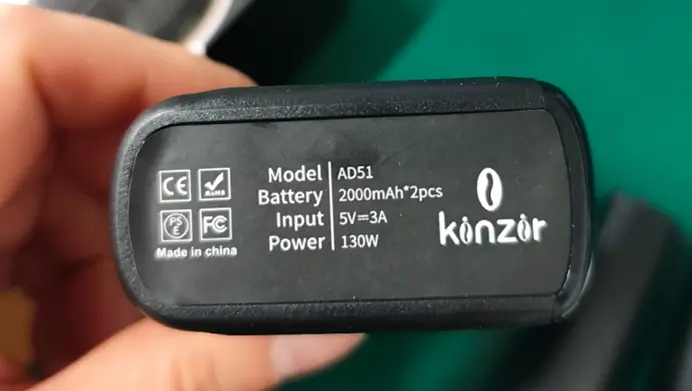
Custom OEM car vacuum cleaners offer battery capacities ranging from 2000mAh to 6000mAh with multiple charging options including USB-C, Micro-USB, and 12V car chargers. Fast-charging capabilities can reduce charging times from 4-6 hours to 2-3 hours depending on the specifications you choose.
Battery Capacities: 2000mAh–6000mAh
Your custom battery capacity vacuum cleaner options typically fall into three main categories based on intended use and performance requirements.
Entry-level models feature 2000-2500mAh batteries that provide 8-12 minutes of continuous operation. These units work well for quick cleanups and light debris removal.
Mid-range options include 3000-4000mAh batteries delivering 15-20 minutes of runtime. You get balanced performance for regular car interior maintenance without excessive weight.
High-capacity units offer 5000-6000mAh batteries with 25-35 minutes of operation time. These batteries support powerful motors and extended cleaning sessions.
Battery voltage ranges from 7.4V to 14.8V across different capacity levels. Higher voltage batteries typically deliver stronger suction power but require longer charging times.
Lithium-ion technology dominates the market due to its lightweight design and minimal memory effect. You can expect 300-500 charge cycles before noticeable capacity degradation occurs.
Charging Methods: USB-C, Micro-USB, Or Car Charger
USB-C charging car vacuum OEM options provide the most versatile charging solution for modern vehicles and devices.
USB-C ports support faster charging speeds up to 65W and offer universal compatibility. You can charge through laptops, power banks, or dedicated wall adapters.
Micro-USB connections remain common in budget-friendly models but deliver slower charging rates. These ports typically provide 5V/2A input for basic charging needs.
12V car charger adapters plug directly into your vehicle’s cigarette lighter socket. You get convenient charging while driving without draining the main battery.
Some OEM models include multiple charging options in a single unit. Dual-port designs let you choose between USB-C and car charging based on availability.
Wall adapters with AC input provide home charging capabilities. Most units include 100-240V compatibility for international use.
Fast-Charging Support
Fast-charging technology reduces standard charging times by 40-60% compared to conventional methods.
Quick Charge 3.0 compatibility allows supported devices to reach 80% capacity in 60-90 minutes. You need compatible chargers to access these speeds.
Power Delivery (PD) through USB-C ports can deliver 18W to 65W charging power. Higher wattage reduces charging time for larger battery capacities.
Smart charging circuits prevent overheating and battery damage during rapid charging cycles. Built-in temperature monitoring automatically adjusts charging speeds.
Most fast-charging systems switch to trickle charging at 80-90% capacity. This protects battery longevity while completing the final charging phase safely.
LED indicators show charging progress with color-coded status updates. Green typically indicates full charge while red or orange shows active charging.
Motor And Suction Performance
Motor specifications and filtration systems determine cleaning effectiveness in custom OEM car vacuums. Power output ranges from 40W to 150W, with multi-speed options providing versatility for different cleaning tasks.
Custom Motor Wattage For High Suction Or Quiet Operation
Motor wattage directly impacts suction power and noise levels in your customized handheld vacuum cleaner. Standard automotive vacuums range from 40W to 150W, with higher wattage producing stronger suction.
Low-Power Motors (40-80W):
- Quieter operation below 70dB
- Extended battery life
- Suitable for light debris and dust
High-Power Motors (100-150W):
- Maximum suction for embedded dirt
- Shorter runtime
- Noise levels up to 85dB
You can specify motor requirements based on your target market’s priorities. Fleet vehicles often require high-power motors for heavy-duty cleaning. Personal vehicle owners frequently prefer quieter 60-80W motors.
Custom motor configurations allow voltage optimization for 12V or 24V vehicle systems. Brushless motors offer longer lifespan and consistent performance compared to brushed alternatives.
Single-Speed Vs Multi-Speed Modes
Multi-speed suction vacuum cleaner OEM options provide greater versatility than single-speed models. Two-speed systems typically offer low and high settings, while three-speed models add a medium option.
Single-speed vacuums operate at fixed power levels. They’re simpler to manufacture and cost less. These models work well for basic cleaning tasks.
Multi-speed systems let users adjust suction strength based on surface type. Low speed works for delicate materials like leather seats. High speed handles carpets and floor mats effectively.
Speed Configuration Options:
- Two-speed: Economy/Power modes
- Three-speed: Low/Medium/High settings
- Variable speed: Continuous adjustment via trigger or dial
Digital speed controls provide precise adjustments. Analog controls offer simpler operation and lower production costs.
HEPA And Advanced Filtration Options
HEPA filter customization car vacuum systems capture particles as small as 0.3 microns with 99.97% efficiency. Standard foam filters only trap larger debris and dust particles.
Filter Type Comparison:
| Filter Type | Particle Size | Efficiency | Cost |
|---|---|---|---|
| Foam | 10+ microns | 85% | Low |
| Paper | 1+ microns | 95% | Medium |
| HEPA | 0.3+ microns | 99.97% | High |
Washable HEPA filters reduce replacement costs for end users. Disposable HEPA filters maintain peak performance but require regular replacement.
Multi-stage filtration combines pre-filters with HEPA elements. Pre-filters capture large debris, extending HEPA filter life. This design reduces maintenance frequency.
Custom filter housing shapes accommodate different vacuum designs. Cylindrical filters work in compact models. Flat panel filters fit low-profile units.
Activated carbon layers eliminate odors from pet hair, food spills, and smoke residue.
Accessories And Attachments
OEM car vacuum manufacturers typically include specialized tools for different cleaning tasks and vehicle surfaces. Most packages feature multiple nozzle types and filtration options designed specifically for automotive environments.
Crevice Tools, Brush Nozzles, Flexible Hoses
Crevice tools are narrow, flat attachments that reach tight spaces between seats, console gaps, and door pockets. Most OEM versions measure 6-12 inches long with angled tips for better access.
Brush nozzles feature stiff bristles for loosening dirt from fabric seats and floor mats. Soft-bristle versions work on leather and vinyl surfaces without scratching.
Flexible hoses extend your vacuum’s reach by 2-4 feet. OEM hoses typically measure 1.25-1.5 inches in diameter and connect directly to the motor unit.
Standard OEM packages usually include:
- 1 crevice tool
- 1-2 brush nozzles (different bristle types)
- 1 flexible extension hose
- Universal connector fittings
Pet Hair Brush And Inflator/Deflator Nozzles
Pet hair brushes use rubber bristles or specialized fabric strips to collect animal fur from upholstery. These attachments create static electricity that lifts embedded hair from fabric fibers.
OEM pet hair tools typically feature removable collection chambers for easy cleaning. Some models include rotating brush heads powered by airflow.
Inflator/deflator nozzles serve dual purposes beyond cleaning. The inflator function fills air mattresses, pool toys, and sports equipment. Deflator mode compresses items for storage.
Most OEM inflator attachments include multiple adapter tips for different valve types. Pressure gauges are uncommon in basic OEM packages but available in premium versions.
Reusable Or Disposable Filters
Reusable filters use washable materials like foam or cloth that you can clean and reinstall. HEPA versions capture particles as small as 0.3 microns.
Foam filters require monthly washing with soap and water. Cloth filters need replacement every 6-12 months depending on usage frequency.
Disposable filters use paper or synthetic materials designed for single use. These typically cost $5-15 for multi-packs from OEM suppliers.
| Filter Type | Lifespan | Maintenance | Cost Range |
|---|---|---|---|
| Foam (reusable) | 12-18 months | Monthly washing | $15-25 each |
| Cloth (reusable) | 6-12 months | Periodic washing | $20-35 each |
| Paper (disposable) | 1-2 months | Replace only | $1-3 each |
Product Size And Capacity Options
OEM manufacturers offer car vacuum cleaners in various sizes ranging from palm-sized 6-inch units to full-sized 18-inch models. Dustbin capacities typically span from 150ml for compact models to 800ml for extended cleaning sessions.
Compact Mini Vacuums For Portability
Cordless mini vacuum OEM factory designs focus on ultra-portable units measuring 6-12 inches in length. These compact models weigh between 1.2-2.5 pounds and fit easily in glove compartments or door pockets.
Standard Mini Vacuum Dimensions:
- Length: 6-12 inches
- Width: 2.5-4 inches
- Weight: 1.2-2.5 lbs
- Dustbin: 150-300ml
The smallest units feature 150ml dustbins suitable for quick spot cleaning. Mid-range compact models offer 200-300ml capacity for moderate cleaning tasks.
Battery life ranges from 12-18 minutes on these portable units. The trade-off for portability means reduced suction power, typically 3000-5000 Pa compared to larger models.
Larger Dustbin Capacity For Long Cleaning Cycles
Custom dustbin capacity car vacuum options extend from 400ml to 800ml for thorough vehicle cleaning. These larger units reduce the frequency of emptying during extended cleaning sessions.
Dustbin Capacity Tiers:
| Size | Capacity | Cleaning Time |
|---|---|---|
| Small | 150-250ml | 5-8 minutes |
| Medium | 300-450ml | 10-15 minutes |
| Large | 500-800ml | 20-30 minutes |
High-capacity models measure 14-18 inches long and weigh 3-5 pounds. The 600-800ml dustbins handle complete interior cleaning without interruption.
These units incorporate transparent dustbin windows for capacity monitoring. Easy-release mechanisms allow quick emptying when full.
Lightweight Or Durable Builds
Lightweight builds prioritize ABS plastic construction weighing 1.5-3 pounds for comfortable extended use. These models sacrifice some durability for reduced hand fatigue during cleaning.
Durable builds feature reinforced plastic or metal components weighing 3.5-6 pounds. Heavy-duty construction withstands frequent professional use and harsh environments.
Build Material Options:
- Lightweight ABS plastic: 1.5-3 lbs, moderate durability
- Reinforced polymer: 2.5-4 lbs, enhanced strength
- Metal housing: 4-6 lbs, maximum durability
Drop-resistant models survive 3-4 foot falls onto hard surfaces. Professional-grade units include rubberized grips and shock-absorbing bumpers for workshop environments.
Weight distribution affects usability during overhead cleaning tasks. Balanced designs place motors near the handle for comfortable operation.
Certifications And Compliance
Custom OEM car vacuum cleaners require multiple international certifications to access global markets. Manufacturers provide market-specific testing reports and use eco-friendly production methods to meet regulatory standards.
CE, ROHS, FCC, PSE, UKCA, CA65 Certifications
CE certification allows your vacuum cleaner to enter European markets. This marking confirms the product meets EU safety, health, and environmental requirements. The certification covers electrical safety and electromagnetic compatibility standards.
RoHS compliance restricts hazardous substances in electronic components. Your vacuum cleaner must contain less than 0.1% lead, mercury, cadmium, and other restricted materials. This certification is mandatory for EU sales.
FCC certification enables US market entry for your product. The Federal Communications Commission requires testing for electromagnetic interference. Class B limits apply to consumer electronics like car vacuum cleaners.
PSE certification is required for Japanese market access. The Product Safety of Electrical Appliances law covers electrical safety requirements. Two PSE categories exist: diamond PSE for higher-risk products and round PSE for standard items.
UKCA marking replaced CE certification for the UK market after Brexit. Your product must meet UK-specific safety standards. The certification process mirrors CE requirements with UK-based testing.
California Proposition 65 requires warning labels for products containing certain chemicals. Your vacuum cleaner needs compliance documentation if sold in California. This affects packaging and product labeling requirements.
OEM Support With Market-Specific Testing Reports
OEM manufacturers provide comprehensive testing documentation for each target market. You receive official test reports from accredited laboratories for all required certifications. These reports include detailed technical specifications and compliance verification.
Testing reports cover electrical safety, EMC testing, and material composition analysis. Your manufacturer coordinates with international testing facilities to ensure accuracy. Reports typically include test methods, results, and certification validity periods.
Market-specific documentation simplifies your regulatory approval process. Manufacturers maintain relationships with testing bodies in major markets. This reduces your time-to-market and certification costs significantly.
Eco-Friendly Engraving And Printing Methods
Laser engraving eliminates chemical inks and solvents from your branding process. This method creates permanent markings without environmental impact. Laser technology works on plastic housings and metal components.
UV-curable inks replace traditional solvent-based printing options. These inks cure instantly under UV light without volatile organic compounds. Your product graphics maintain durability while meeting environmental standards.
Water-based printing systems reduce harmful emissions during production. These methods comply with strict VOC regulations in multiple markets. Color consistency and adhesion match traditional printing quality.
Eco-friendly methods often qualify for additional environmental certifications. Your product can display green compliance marks for environmentally conscious consumers. These certifications differentiate your vacuum cleaner in competitive markets.
Documentation And After-Sales Support
OEM car vacuum cleaners come with comprehensive warranty programs, dedicated technical support channels, and modern digital tracking systems. These services ensure long-term product reliability and customer satisfaction.
OEM-Branded Warranty Services (12 Months)
Your custom OEM car vacuum cleaner includes a standard 12-month manufacturer warranty covering defects in materials and workmanship. This warranty applies to motor assemblies, electrical components, and plastic housing structures.
Warranty Coverage Details:
- Motor failure from manufacturing defects
- Electrical system malfunctions
- Structural component breaks under normal use
- Filter housing seal failures
The warranty excludes damage from misuse, normal wear items like filters, and modifications to original components. You must retain your purchase receipt and register the product within 30 days of purchase.
Warranty claims require proof of purchase and serial number verification. Most manufacturers process claims within 5-7 business days after receiving the defective unit.
Technical Support And Spare Parts Supply
Technical support teams provide guidance on troubleshooting, maintenance procedures, and optimal usage techniques. Support channels typically include phone lines, email tickets, and live chat systems.
Common support services include motor performance issues, suction power optimization, and accessory compatibility questions. Response times range from 2-24 hours depending on contact method and issue complexity.
Available Spare Parts:
- HEPA and foam filters
- Extension hoses and crevice tools
- Power adapters and fuses
- Motor brushes and seals
Spare parts remain available for 3-5 years after product discontinuation. You can order directly through manufacturer websites or authorized distributors.
Branded QR Codes For Service, Manuals, And Logistics Tracking
QR codes printed on product labels connect you to digital resources and support systems. Scanning codes provides instant access to branded instruction manual vacuum cleaner content and service portals.
QR Code Functions:
- Service Access: Direct links to warranty registration and repair request forms
- Manual Downloads: Complete instruction guides in multiple languages
- Parts Ordering: Quick access to compatible accessories and replacement components
- Tracking Systems: Real-time updates on repair status and shipping information
The branded instruction manual vacuum cleaner includes maintenance schedules, troubleshooting charts, and safety guidelines. Digital manuals update automatically with revised procedures or safety notices.
Logistics tracking allows you to monitor repair progress from initial shipping to completed service return.
Flexible Order Quantities And Proofing
OEM car vacuum manufacturers offer flexible minimum order quantities starting as low as 100-500 units for custom branding. Most suppliers provide rapid sample production within 3-5 days and accommodate orders ranging from small private label batches to large wholesale shipments.
Small Batch OEM Accepted (Low MOQ For Logo Printing/Engraving)
Many OEM manufacturers accept small MOQ vacuum orders starting at 100-500 units for logo printing or engraving. This makes custom branding accessible for startups and small businesses testing new products.
Typical MOQ ranges:
- Logo printing: 100-300 units
- Laser engraving: 200-500 units
- Custom packaging: 500-1,000 units
You can customize cordless car vacuums with your brand logo, color schemes, and packaging design. Some suppliers offer even lower quantities of 50-100 units for initial testing, though unit costs increase significantly.
The low MOQ structure allows Amazon seller private label vacuums to enter the market without massive upfront investments. You maintain inventory flexibility while building your brand presence.
Fast Proofing Samples In 3–5 Days, With Quick Production Lead Times
Fast proofing OEM vacuum samples typically arrive within 3-5 business days after design approval. This rapid turnaround lets you evaluate product quality and make necessary adjustments before placing larger orders.
Standard timeline breakdown:
- Sample production: 3-5 days
- Sample shipping: 2-7 days (depending on location)
- Production after approval: 7-15 days
Most manufacturers provide 1-3 free samples with your custom branding applied. Additional samples cost $30-80 each depending on complexity and shipping method.
Production lead times range from 7-15 days for orders under 1,000 units. Larger quantities may require 15-25 days depending on customization requirements and factory capacity.
Scalable Orders For Bulk Buyers Like Importers, Distributors, And Amazon Sellers
Bulk buyers benefit from tiered pricing structures that reduce unit costs significantly as order quantities increase. Importer wholesale cordless car vacuum orders typically start at 1,000+ units with substantial cost savings.
Volume pricing tiers:
- 1,000-2,999 units: 15-25% discount
- 3,000-4,999 units: 25-35% discount
- 5,000+ units: 35-45% discount
Distributors often place orders ranging from 2,000-10,000 units to supply multiple retail channels. Amazon sellers frequently order 1,000-3,000 units initially, then scale up based on sales performance.
Large orders include additional services like custom retail packaging, product inserts, and freight shipping arrangements. Payment terms become more flexible with established bulk buyers, often including 30-60 day payment options.
Why Partner With A Professional OEM Manufacturer
Professional OEM manufacturers provide advanced research capabilities, rigorous quality control systems, and scalable support structures. These manufacturers offer specialized expertise in wholesale car vacuum customization and maintain dedicated production facilities for consistent output.
Strong R&D And Multiple Production Lines
Professional OEM manufacturers maintain dedicated research and development teams that focus specifically on automotive cleaning technology. These teams develop new suction mechanisms, filtration systems, and compact designs tailored to vehicle interiors.
Multiple production lines allow manufacturers to handle different vacuum models simultaneously. You can order portable handheld units on one line while wet-dry combination vacuums run on another line.
Production capacity typically includes:
- 5,000 to 50,000 units monthly per line
- Specialized assembly equipment for motor installation
- Automated testing stations for each production stage
Custom portable car vacuum suppliers use separate lines for different power specifications. This separation prevents manufacturing delays when you need both 12V DC and cordless battery models.
Advanced manufacturers operate clean room facilities for motor assembly. These controlled environments reduce contamination that could affect suction performance or motor longevity.
Strict QC With Endurance And Safety Tests
Quality control protocols include standardized testing procedures that verify each vacuum’s performance specifications. Manufacturers test suction power, filtration efficiency, and electrical safety before units leave the facility.
Endurance testing involves:
- 1,000-hour continuous operation tests
- Temperature cycling between -10°C and 60°C
- Vibration resistance testing at automotive standards
- Drop testing from 1-meter height
Safety certifications require compliance with automotive electrical standards including CE, FCC, and automotive EMC requirements. Professional manufacturers maintain these certifications through regular third-party audits.
Batch testing procedures sample random units from each production run. This statistical approach identifies potential issues before large quantities ship to your customers.
Manufacturers document all test results and maintain traceability records for each batch. You receive quality certificates that specify the exact performance parameters of your custom vacuum orders.
Reliable Support For Both Small And Large Clients
Professional manufacturers accommodate minimum order quantities starting from 500 to 1,000 units for custom designs. Small businesses can access the same customization options available to larger automotive retailers.
Technical support includes engineering consultation for custom specifications. Manufacturers help you select appropriate motor power, filtration types, and accessory combinations based on your target market requirements.
Support services include:
- Custom packaging design and printing
- Product manual creation in multiple languages
- Spare parts inventory management
- Warranty claim processing
Large-scale clients receive dedicated account management and priority production scheduling. Manufacturers can reserve production capacity during peak seasons to ensure consistent supply.
Post-delivery support covers product training for your sales teams and technical troubleshooting guides. This ongoing assistance helps you successfully market and support your custom vacuum products.
Conclusion
Custom OEM car vacuum cleaners offer manufacturers the ability to create products that meet specific market demands. You can work with suppliers to develop units with targeted features and specifications.
Key Benefits:
- Brand differentiation through unique designs
- Cost control through volume manufacturing
- Quality assurance via established production processes
- Technical support during development phases
Your choice of OEM partner determines the success of your vacuum cleaner line. Experienced manufacturers provide engineering expertise and regulatory compliance support.
Critical Selection Factors:
- Production capacity and scalability
- Quality control systems
- Certification capabilities
- Design flexibility options
You should evaluate multiple suppliers before committing to a partnership. Request samples and detailed specifications to assess product quality firsthand.
The automotive vacuum market continues expanding as vehicle ownership grows globally. Custom OEM solutions position your brand to capture market share through differentiated products.
Your investment in custom development pays dividends through improved profit margins and customer loyalty. OEM partnerships reduce time-to-market while maintaining quality standards.
Consider your target market’s specific needs when defining product requirements. Features like cordless operation, wet/dry capability, and compact storage drive consumer purchasing decisions.
Custom OEM car vacuum cleaners represent a viable path to market entry or product line expansion. The right manufacturing partnership delivers products that meet your specifications and budget requirements.
Frequently Asked Questions
OEM car vacuum cleaner selection involves evaluating motor specifications, customization capabilities, and compatibility requirements. Manufacturers typically offer warranty periods ranging from one to three years with various design modification options.
What features should I consider when selecting an OEM car vacuum cleaner for manufacturing?
You should prioritize suction power measured in air watts, typically ranging from 60-120 air watts for automotive applications. Battery capacity determines runtime, with most units offering 15-30 minutes of continuous operation.
Motor type affects performance and longevity. Brushless motors provide longer lifespan and consistent power output compared to brushed alternatives.
Filtration systems require HEPA filters for fine particle removal. Multi-stage filtration captures debris ranging from large particles to dust mites.
Consider attachment variety including crevice tools, brush heads, and extension hoses. Standard cord lengths range from 12-16 feet for corded models.
How does the suction power of different OEM car vacuum cleaners compare?
Entry-level OEM units typically generate 60-80 air watts of suction power. Mid-range models produce 80-100 air watts with improved motor efficiency.
Premium OEM car vacuums deliver 100-120 air watts through advanced motor technology. Higher suction power directly correlates with debris removal effectiveness on various surfaces.
Cordless models generally provide lower suction compared to corded versions. The power difference ranges from 20-40% depending on battery voltage and motor design.
Can I customize the design and functionality of car vacuum cleaners for my brand?
You can modify exterior housing colors, logos, and branding elements through most OEM manufacturers. Custom packaging options include branded boxes, user manuals, and warranty cards.
Functional modifications include attachment selection, cord length adjustments, and filter type specifications. Some manufacturers offer custom motor configurations for specific performance requirements.
Minimum order quantities for customization typically start at 500-1000 units. Design changes may require 4-8 weeks additional production time.
What is the typical lifespan of a high-quality OEM car vacuum cleaner?
High-quality OEM car vacuum cleaners operate effectively for 3-5 years with regular maintenance. Motor lifespan depends on usage frequency and cleaning conditions.
Brushless motors typically last 500-800 operating hours. Brushed motors require replacement after 200-400 hours of use.
Battery-powered units need replacement batteries after 300-500 charge cycles. Proper storage and charging practices extend overall unit longevity.
What warranty options are available for OEM car vacuum cleaners?
Standard OEM warranties range from 12-24 months covering manufacturing defects and motor failures. Extended warranty options extend coverage to 36 months for additional cost.
Warranty terms typically exclude normal wear items like filters, batteries, and attachments. Motor and electrical component failures receive full replacement or repair coverage.
Some manufacturers offer separate battery warranties lasting 6-12 months. Warranty claims require proof of purchase and adherence to usage guidelines.
How do I ensure compatibility between OEM car vacuum cleaners and various car models?
You need to verify power outlet specifications for each target vehicle model. Most cars use 12V DC outlets with 10-15 amp capacity limits.
Cord length requirements vary by vehicle size and interior layout. Compact cars need minimum 12-foot cords while SUVs require 16-foot lengths for complete coverage.
Attachment sizes must accommodate different seat configurations and storage compartments. Universal attachment designs work across most vehicle types without modification.
